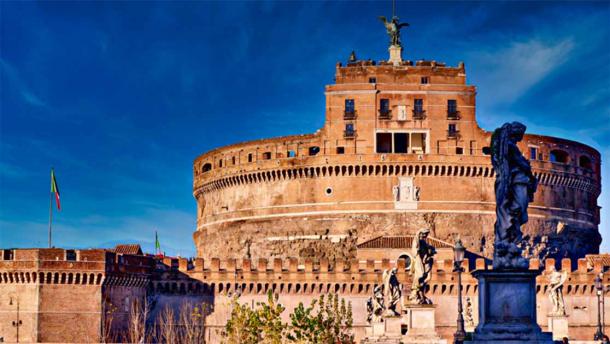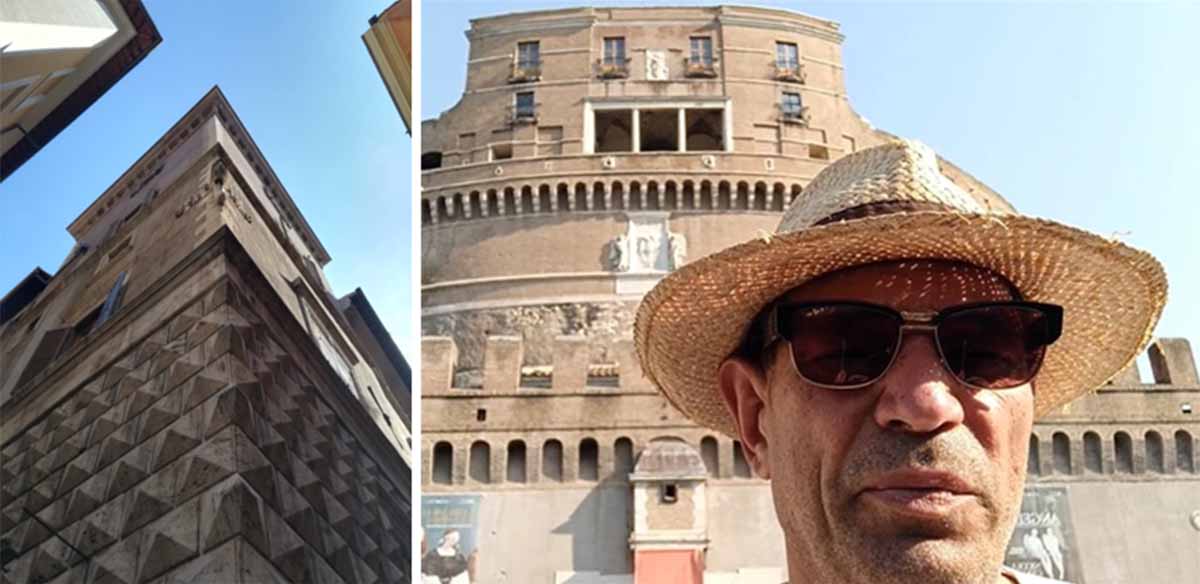Unearthing Italy's Hidden Renaissance Castles 4: Borgia Strongholds of Rome
Rome was the adopted hometown of the Borgia; they were originally from the Catalan region of Spain. The Roman branch of the Santacroce family had lived in Rome for a few centuries. In this episode, Marcello visits some of the famous locations related to the Renaissance families, including the Santacroce Tower, Castel Sant'Angelo (Saint Angel Castle). He also traces the Passetto del Borgo, a fortified passage built by Pope Borgia in order to provide a safe emergency route to the castle.
Here is the full Hidden Renaissance Castles series:
- Unearthing Italy's Hidden Renaissance Castles 1: The Borgia and Orsini Affair
- Unearthing Italy's Hidden Renaissance Castles 2: Bracciano Castle, the Orsini HQ
- Unearthing Italy's Hidden Castles 3: Rites and Recreation in the Renaissance
- Unearthing Italy's Hidden Renaissance Castles 4: Escape Route Rome
- Unearthing Italy’s Hidden Renaissance Castles 5: Castle Complex Discovered
Rome at the time of Pope Borgia Alexander VI: The Santacroce Palace and Tower
In 1501 the Palazzo Santacroce was built on the ruins of the previous palace that had been torn down by the pope before Pope Borgia Alexander VI. The owners of the Palazzo were the Santacroce who were exiled from the Papal States because they ambushed and killed ten members of the Margani and the son of the Colonna prefect who was dear to the Pope Sixtus IV. The Santacroce were loyal to the Orsini. The Orsini and the Colonna had been warring each other for centuries. After the ambush, the very next day the Santacroce Palazzo was made into rubble, and the Santacroce exiled from the Papal States.
During the rule of Pope Borgia, the Santacroce returned to Rome and built the tallest tower of Rome of the time; a prestige landmark. The Tower communicated with Pope Borgia’s castle nearby.
There are three such buildings in Italy built during the Renaissance, which are Diamond Pointed on the exterior walls, ‘ a punta di diamante’. The Santacroce were clearly displaying power through a branch of their family who was high up the hierarchy of the Vatican. Antonio Santacroce was third in the hierarchy of the administration of the Vatican. He was Vice Camerlengo and Head of the Roman Police, Questore di Roma.
Clearly the Santacroce and the Borgia had made a deal with regard to their return to Rome. Not a bad come back for the Santacroce.

Tower of Palazzo Santacroce in Rome (built 1501). It communicated with the Castel Sant’Angelo of Pope Borgia Alexander VI. (2023 Assandri)
Campo de Fiori
During my tours, I always stop at the Club of the mistress of Pope Borgia Alexander VI. She was Giovanna ‘Vannozza’ Cattanei. She was the mother of Juan, Cesare, Giuffre and Lucrezia. She owned the most famous club in Rome at the time of Pope Borgia. I took some videos of the visit. The Club was renowned for the learned ladies, the cortigiane. Some of them became quite wealthy and influential. Vannozza, as mistress of the Pope, invested and owned several clubs and taverns in Campo de Fiori, the commercial center of the city. In the video, I take you to her most profitable enterprise in Campo de Fiori.

Possibly Giovanna dei Cattanei, born on July 13th, 1442, in Mantua, Italy. The mistress of Pope Borgia Alexander VI. (Public Domain)
- Women Of Independent Means, Revered Ancient Courtesans
- Protection or Profit? The 1000 Prostitutes Employed by the Church in 12th Century London
Location 2: Saint Angel Castle – Castel Sant Angelo
Castel Sant Angelo, located on the right bank of the Tiber River in Rome, has a long history. Originally constructed as a mausoleum for the Roman Emperor Hadrian in the 2nd century AD, it was later transformed into a fortress and residence for popes during the Middle Ages. By the time of the Renaissance, it was a crucial stronghold for the Papal States.

Castel Sant Angelo, Rome. (Маркіян Паньків/Adobe Stock)
While the primary papal residence was in the Vatican, Castel Sant'Angelo provided an additional layer of security and served as a stronghold, prison, and treasury. Given the Borgia family's power seeking activities and the various threats they faced, it's easy to see why such a fortress would have been important to them.
Considered a masterpiece of military architecture of the Sangallo School, construction began in 1493. It is built on seven levels, as the number 7 was the perfect number for the members of the Sangallo Sect. They were in fact, followers of Pythagoras who was, incidentally, a vegetarian, like Leonardo da Vinci.
Here is a painting of the castle at the time of Pope Borgia Alexander VI in 1503, when it was completed. Below the design of the fortifications, shaped like a pentagonal star.

The Castel Sant'Angelo from the South. (Public Domain)

The design of the Castel Sant'Angelo fortifications like a pentagonal star. (Author Provided)
A chain of towers from the coast connected the seven military districts to the headquarters in Rome which was the Palace of Pope Borgia Alexander VI.
The tower of Palazzo Santacroce and the tower of the castle of Viano were connected during the day with smoke signals, and at night with light signals. In the city, messages were carried by couriers who ran faster than horses in the small alleys of Rome. This is the ancient origin of the word ‘Courier’.
Passetto di Borgo
The Passetto di Borgo (Borgo Passage) was originally designed to oversee the Borgo area below and quell any uprisings, thanks to its elevated vantage point which facilitated the launch of arrows or gunfire. It was also used to discreetly transport high-profile prisoners to the dungeons of Castel Sant'Angelo.
During times of danger or unrest, the popes could retreat from the Vatican to Castel Sant'Angelo via the Passetto del Borgo, an elevated passage. In 1494, Pope Alexander VI Borgia navigated the 800-meter corridor to seek shelter in the castle during Charles VIII of France's invasion of Rome. He deemed the passage worthy of an upgrade, which completed it more or less to its current design in 1499, although further developments have taken place.
Another significant event occurred in 1527 when Pope Clement VII Medici took refuge in Castel Sant’Angelo during the Sack of Rome by Charles VIII's Lanzichenecchi forces.
Top image: Left, Santacroce tower, Rome Right, Marcello Assandri at Castel S Angelo, Rome. Source: Marcello Assandri
All video courtesy of Marcello Assandri.
For more details of the informative and adventurous history tours Marcello provides, contact him at: [email protected]

















